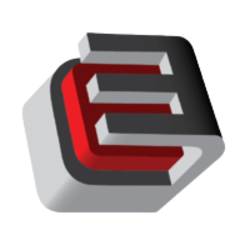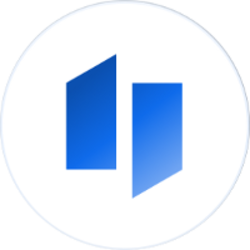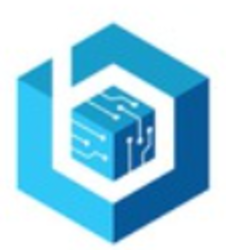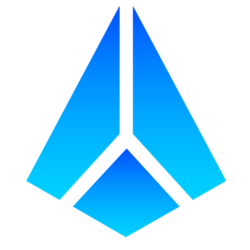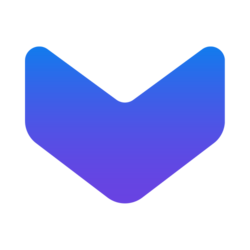Peer-to-peer was one of Satoshi Nakamoto’s visions when he introduced Bitcoin to the world. GDCC is a blockchain platform that takes this concept to the next level. Specifically, it provides better security and facilitates faster transfers of digital assets.
It features an exchange platform, an automated market maker (AMM) pool, staking protocols, yield farming opportunities, and much more.
Today’s review will help us better understand GDCC and how it can help redefine peer-to-peer asset transactions. We will cover the features, benefits, and roadmap of GDCC to understand what this project offers.
What Is GDCC?
GDCC is a secure and reliable way to trade digital assets, conduct payments, and enter the Web 3.0 world.
The Global Digital Cluster Coin offers several advantages over traditional payment systems. Its peer-to-peer network allows users to quickly and safely transfer money without intermediaries.
What does GDCC have to offer? We will answer this question section after section.
The Benefits of Using GDCC
The main advantages of using GDCC are:
1. Low fees: GDCC has a low fee structure for trading and transactions, making it an affordable solution for everyone.
2. Fast Transactions: The network is optimized to handle large volumes of transactions with almost instant confirmations.
3. Security: All data is stored in an immutable ledger, ensuring the user’s assets are always safe.
4. Interoperability: The platform is compatible with other blockchain networks, allowing users to easily move their funds across different blockchains.
5. Virtual Machine: GDCC features a virtual machine that allows developers and programmers to build and deploy their applications on the network.
6. Scalability: The platform’s low costs and high speed play a fundamental role in achieving scalability.
We willingly excluded one of the main features of the project, its deflationary profile, from this section. We’ll have time to dive deep into it later in our review.
A Large Ecosystem of Features
GDCC’s website paints a clear picture when it describes the team’s ideal ecosystem for the project. It leverages a wide range of features, such as:
- A Decentralized Exchange (or “DEX”) where users can trade digital assets.
- A cross-blockchain bridge that allows trustless interoperability between different networks.
- An Automatic Market Maker (AMM) to ensure continuous liquidity of tokens on the network.
- A Staking platform where users can participate in consensus and receive rewards for their contributions.
- Yield Farming opportunities that allow users to generate additional income by providing liquidity on the network.
- An NFT Marketplace where users can buy and sell unique digital assets with real-world value.
- A Metaverse dimension allows people to experience and explore different digital realms.
- A blockchain explorer to help users examine the system in a fully transparent manner
These elements build a robust ecosystem that allows people to leverage multiple concepts in the crypto space.
With GDCC’s commitment to interoperability and scalability, developers can bring their solutions to fruition without network limitations. This is especially beneficial to businesses that bridge different networks and projects together.
Multiple Products
The team unveiled to the public three of their products. Specifically, we can expect a secure DeFi bridge, private transactions, and native token integration. Here are more details about each of them:
1. DeFi Bridge: Bridges help developers build decentralized applications (dApps) and wallets on the Global Digital Cluster Coin platform. Bridging multiple blockchains is essential to create a vibrant DeFi ecosystem.
2. Private Transactions: GDCC also offers its users the option of making private and secure transactions. All transactions through Hopium – the platform’s DEX – will be untraceable, protecting user privacy and data safety.
3. Native Token Integration: Last but not least, the team’s native token – $GDCC – will be integrated into the platform. This is essential for users to access and use various applications built on the blockchain. Additionally, it will act as a currency for buying and selling goods or services and making payments.
These products can create a more secure, convenient, and conducive ecosystem for developers, entrepreneurs, investors, and users. With them, GDCC aims to revolutionize the blockchain space by delivering a fully functioning platform for users and developers worldwide.
The Launch of Two Tokens
As mentioned above, the project will rely on the $GDCC token to fuel many of its features. However, this is not all. In addition to the $GDCC token, the project launched a second token – the $GUSD token.
If you are familiar with stablecoins, then you may already know what the $GUSD token is all about. The $GUSD token is a stablecoin pegged to the US Dollar, meaning its value will remain tied to the USD. This makes it an ideal asset for managing risk and completing payment operations.
Token Burning Mechanism
The main feature you should know about the $GDCC token is that it falls into the category of deflationary tokens. This means that the token will decrease in total supply over time.
This is possible through a token-burning mechanism, operating each time smart contracts collect a transaction fee on the platform. Half of this collected gas will enter an automatic burning mechanism, which will become permanently inaccessible and removed from circulation.
This process reduces the total supply of tokens in the system and directly affects the price of the token. As the total supply becomes scarcer, demand should increase in token value.
The burning mechanism runs automatically through smart contracts programmed into the protocol. This ensures that every transaction will automatically execute and enter the blockchain’s decentralized ledger.
The GDCC burn mechanism affects the coin’s inflation rate, as a percentage of each transaction will exit circulation. This ensures that users can confidently make transactions, knowing that a deflationary currency backs their investments.
This deflationary element helps to maintain stability within the platform. This is because it may reduce volatility’s impact and helps keep prices stable.
What Does GDCC Roadmap Tell Us?
The project’s website lists six milestones for the GDCC platform. First, we find the launch of its so-called “featherweight” architecture. This aims to maximize performance while minimizing resources consumed.
The roadmap also promises to bring robustness to GDCC’s network by introducing smart contracts. This will help ensure that all transactions between users remain secure and reliable.
High compatibility represents another milestone listed in GDCC’s roadmap. This will allow developers to use the platform to deploy and execute smart contracts through the EVM (Ethereum Virtual Machine).
No modern project can succeed without cross-chain features, which is another milestone listed in GDCC’s roadmap. The move allows users to make transactions across different blockchains with ease.
Finally, the combination of low costs and high-speed transactions will help GDCC stay competitive in the rapidly growing blockchain field. These features are fundamental for any project aiming to achieve scalability in the blockchain sector.
Bottom Line – Redefining Peer-to-Peer Asset Transaction
The GDCC project is an ambitious undertaking that seeks to redefine how we make peer-to-peer asset transactions. Its combination of deflationary tokens and cross-chain features makes it particularly appealing for developers and users alike.
GDCC’s website and social media platforms represent a good starting point for learning more about the project. They offer a comprehensive insight into the platform’s ecosystem, making it easier for newcomers to understand how GDCC works.
